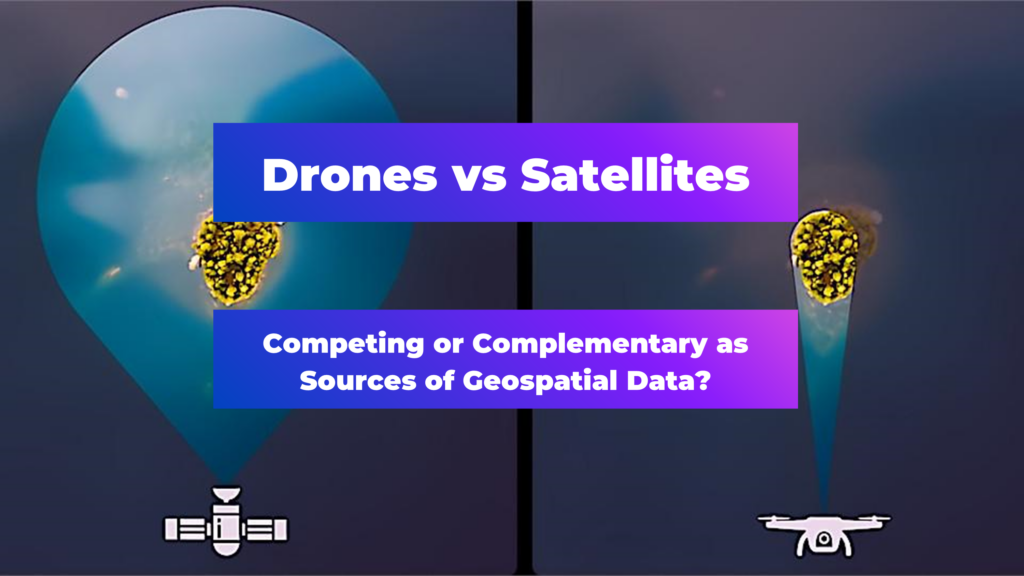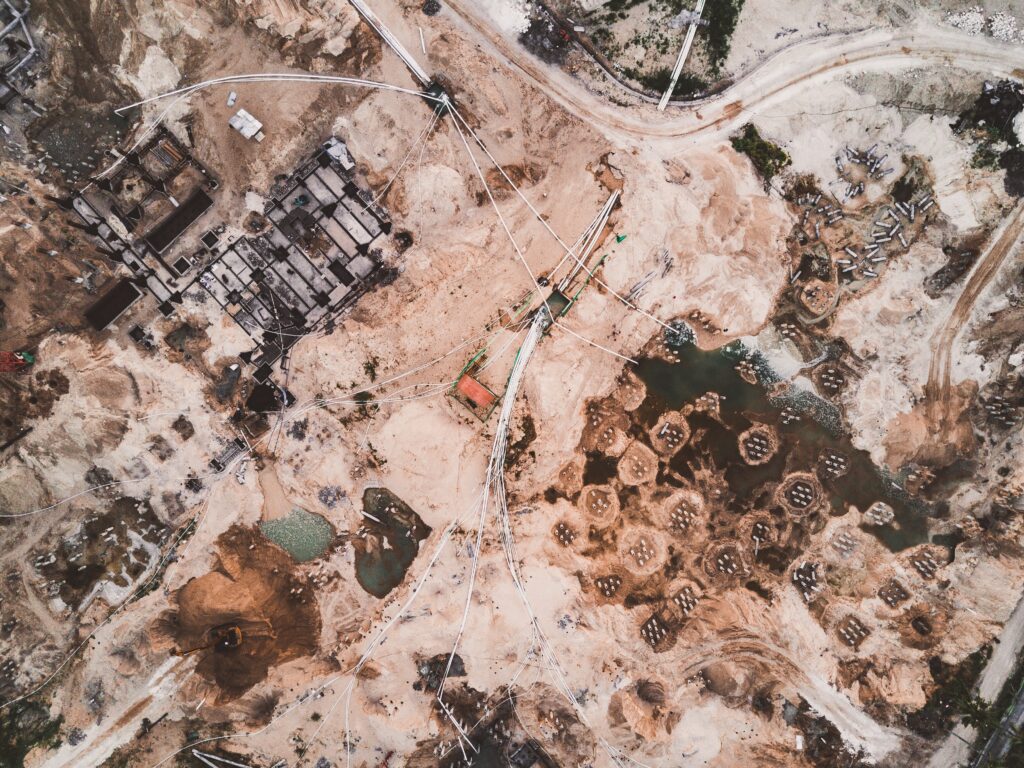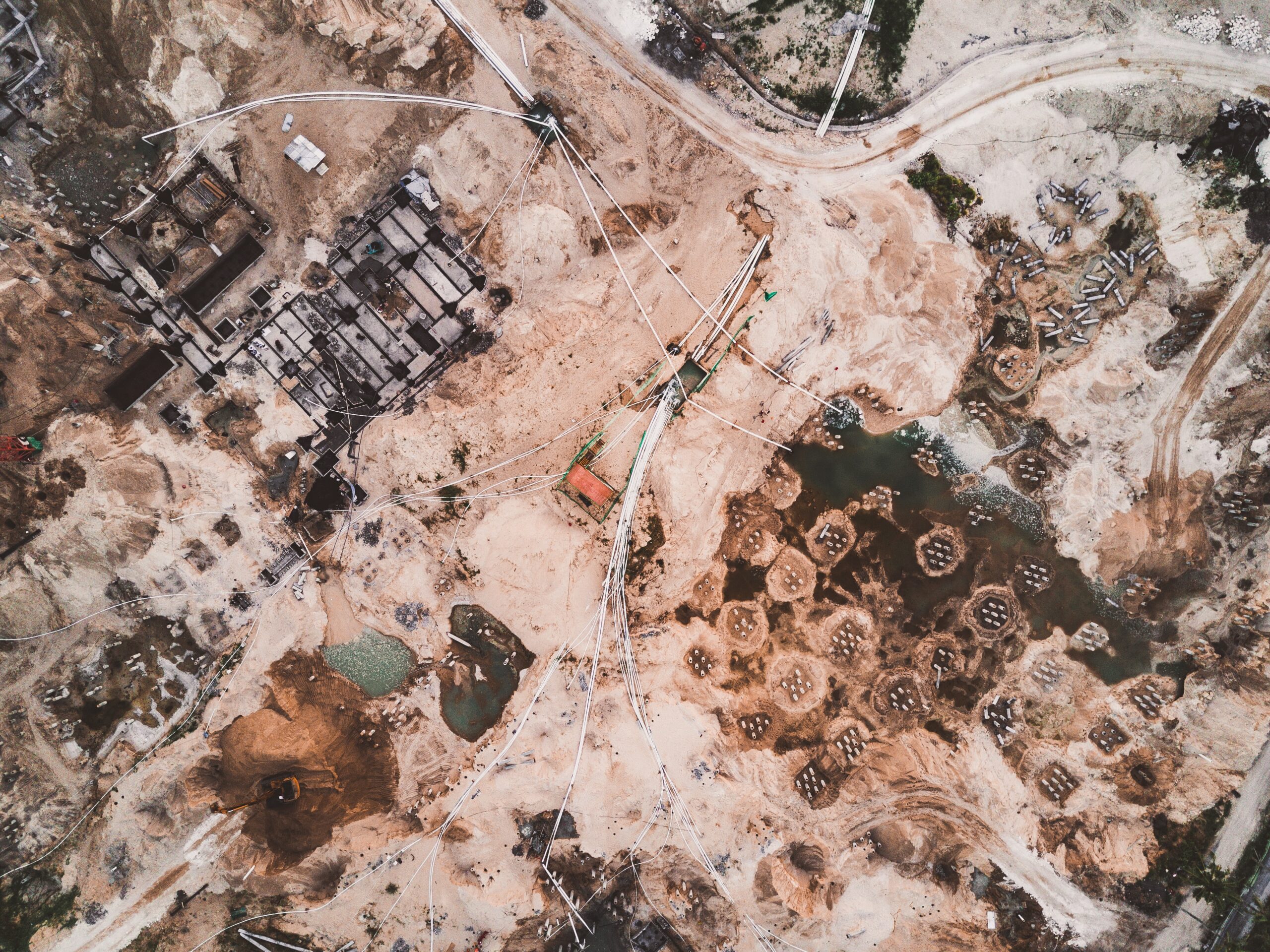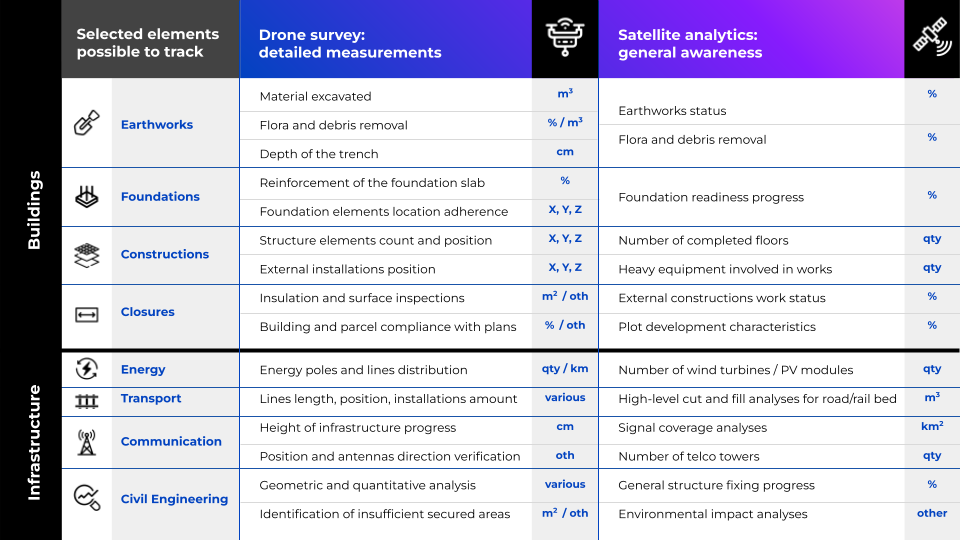
Are Drones and Satellites Competing or Complementary as Sources of Geospatial Data?
Editor’s note: This article was written as part of EO Hub – a journalistic collaboration between UP42 and Geoawesomeness. Created for policymakers, decision-makers, geospatial experts and enthusiasts alike, EO Hub is a key resource for anyone trying to understand how Earth observation is transforming our world. Read more about EO Hub here.
Both drones and satellites have helped to usher in a new era in Earth observation. These two remote sensing tools have revolutionized our ability to gather detailed data about our planet’s surface. While they might seem like rivals at first glance, a closer look reveals that their strengths are in fact complementary, with each making up for the other’s weaknesses.
Drones are recognized for their ability to capture detailed, high-resolution images of relatively small areas, with unparalleled agility and precision. However, their range, coverage and flight time are inherently limited, often restricted by their battery life and susceptibility to adverse weather conditions. Here, satellite data can be a powerful ally, with the ability to capture vast swathes of the Earth’s surface quickly, efficiently and repeatedly.
There are numerous instances where data from drones and satellites can be utilised in tandem to give a more comprehensive picture of the Earth’s surface.
Comparing Drones and Satellites Data Sources:
Looking deeper into the specific attributes of satellite and drone data, it becomes apparent that each source offers unique benefits. When used together, the two tools provide a synergistic approach to Earth Observation. This table provides a comparison of their qualities:

The key benefit of drones is arguably their ability to provide very-high spatial resolution data, down to a centimeter level—in other words, incredibly detailed imagery. This is ideal for engineering tasks or safety assessments, for example. By contrast, while the spatial resolution provided by satellites is improving all the time, it is still significantly lower than that captured by drones, typically ranging from meters to tens of meters. Where satellites really excel, however, is in their ability to provide a macro perspective, capturing data over vast areas quickly and efficiently. Datasets on this scale are invaluable for comprehensive analysis and decision-making, and management of large-scale projects.
Another advantage of drones is that they can be deployed incredibly rapidly and are highly maneuverable—critical for time-sensitive or targeted missions, such as searching for survivors in the immediate aftermath of a disaster. The immediacy with which drone data can be accessed and analyzed is also of huge importance. However, a drone’s flight time is often restricted by limited battery life. Satellites are not such a flexible and highly targeted option, but they offer constant and consistent monitoring. They are also able to make frequent revisits to a given area of interest, offering regularly updated data—ideal for long-term monitoring.
One of the biggest drawbacks of drones is that they can be limited by weather conditions like high winds. Their use may also be restricted in certain locations due to local legislation or logistical challenges. Satellites, however, can observe any place on earth, and capture data in all conditions—even at night, if using Synthetic Aperture Radar (SAR) systems. It is worth pointing out, however, that in heavy cloud cover, satellites are not able to capture spectral data, unlike drones, which can fly below the clouds.
Finally, although cheaper options are becoming available, satellite data can still be quite expensive. This means that drones are often the most affordable solution for localized or short-term operations. On the other hand, for large-scale projects, economies of scale mean that satellite data very often proves to be more cost-effective.
In short, the wide areas of coverage and frequent revisits achieved by satellites provide data on a scale not possible for drones, while drones provide an ideal solution for many of the shortcomings of satellites. Furthermore, satellite imagery, with its macro perspective, can contextualize the detailed data provided by drones. When combined, they deliver a rich, robust data set, invaluable for a wide range of applications.
Acquiring the Data:
When it comes to drone data, there are a few operational models that cater to various project needs. For instance, individual users may own and operate their drones, which gives immediate availability and full control over the data collection process. It can also be the most affordable option for simple or small-scale projects. However, operating drones requires a certain amount of expertise depending on project complexity and size, and for a variety of reasons direct ownership may be impractical. Therefore, drone operations are sometimes subcontracted—either to specialized companies that provide the drone equipment and pilots, or by purchasing data from platforms like Globhe, which crowdsource data from professional drone operators.
Satellite data, on the other hand, has traditionally been prohibitively expensive for many use cases, and purchasing it directly from satellite companies has been a challenge to say the least. However, data marketplaces like UP42 are democratizing the use of satellite data, making it increasingly easy for users to purchase discreet data sets, or even task satellites themselves, and to integrate this data into their workflows.
Interestingly, the recent partnership between UP42 and Globhe is a prime example of how the landscape is still changing. This collaboration brings Globhe’s world-leading collection of drone imagery to UP42’s well-established geospatial marketplace, and enables users to order drone data from any area of interest around the world in much the same way as they procure satellite data. Being able to access both types of data from one source has the potential to radically streamline the process of data acquisition and analysis. The development is significant for a number of industries, including agriculture, environmental conservation, and disaster response, where the combination of drone and satellite data can lead to more informed decisions and effective interventions.
Use Cases for Drones and Satellites Working in Tandem
Disaster response is a key application for Earth Observation. In the immediate aftermath of a disaster, drones are rapidly deployed to assess damage, providing vital data to aid rescue operations and damage assessment. Satellites, meanwhile, offer a wider perspective, mapping the affected area and tracking the progress of recovery efforts over time. This combination ensures that every phase of the disaster response—from immediate relief to long-term rebuilding and prevention—is informed by the best possible data.
Similarly, in the field of flood monitoring, drones can be deployed to capture high-resolution imagery of the affected areas—images which show the extent of the damage and can be instrumental in planning immediate response actions. Satellites further complement this by monitoring the extent of the flooding over a wider area, and tracking its movement over time, offering a strategic view that’s essential for recovery and future planning.
Another compelling use case is in agriculture—particularly in crop monitoring. Both drones and satellites can be equipped with multispectral imaging cameras to assess the health of crops. However, while drones can assess crops at a granular level, identifying areas of stress or disease sometimes on individual plants, satellites can monitor the growth and yield of crops over an entire farming region. This dual approach ensures both targeted intervention and overarching management of agricultural resources.
Complementary Tools for Comprehensive Understanding
Drones and satellites are not competitors when it comes to Earth Observation. Instead, with their unique capabilities, they are complementary tools. When used together, they provide a more comprehensive and accurate understanding of the Earth’s surface, which can prove crucial for a variety of applications. As an increasing number of industries continue to leverage these technologies, we can look forward to a future in which our planet is observed with unprecedented precision and insight.
Did you like the article? Read more and subscribe to our monthly newsletter!






